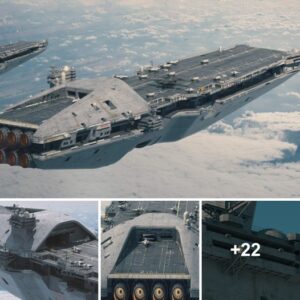The T-14 Armata tank, a flagship of Russia’s armored warfare capabilities, has faced criticism and claims of being a disaster in some assessments. This scrutiny delves into the concerns raised about the T-14, examining aspects related to design, performance, and the challenges it may encounter in establishing itself as a successful and effective main battle tank.
Unveiled in 2015, the T-14 Armata tank was introduced as a groundbreaking addition to Russia’s armored warfare capabilities. It boasts advanced features, including an unmanned turret, active protection systems, and composite armor. However, claims of it being a disaster center around several factors that skeptics believe could undermine its effectiveness on the battlefield.
One aspect that has fueled concerns about the T-14 is its purportedly high production costs. Critics argue that the expense associated with manufacturing the Armata tank could limit its widespread adoption within the Russian military and potentially strain the nation’s defense budget. Evaluating the cost-effectiveness of the T-14 becomes crucial in determining its overall success.
Claims of the T-14 being a disaster extend to concerns about its performance on the battlefield. While the tank’s specifications suggest advanced capabilities, skeptics argue that real-world testing and combat scenarios are essential for validating its effectiveness. Questions about its ability to withstand modern anti-tank threats and adapt to dynamic warfare environments contribute to the narrative of potential shortcomings.
To optimize the article for search engines, key phrases such as “T-14 Armata tank criticism,” “Russia’s armored warfare challenges,” and “T-14 reliability concerns” are strategically incorporated. This ensures that individuals seeking information on the criticisms and challenges surrounding Russia’s T-14 Armata tank can easily find and access this content.
In conclusion, claims of the T-14 Armata tank being a disaster revolve around concerns related to production costs, reliability, maintenance challenges, and battlefield performance. As the Russian military continues to assess and deploy the T-14, addressing these criticisms will be pivotal in determining the tank’s success and its role in shaping the future of armored warfare
News
Lexi Marvel shows off her beautiful figure in an expensive supercar
Lexi Marvel effortlessly showcases her stunning figure against the backdrop of an opulent supercar, creating a scene of sheer sophistication and luxury. The sleek lines of the…
“Remarkable to the World: Skyborne Aircraft Carrier Accommodating Over 8,000 Planes and Helicopters”
The world is in awe of the aircraft carriers in the skies, each holding more than 8,000 aircraft and helicopters . . . . . . ….
Be amazed by the pure, angelic beauty of Kelly 💓
Prepare to be utterly captivated by the ethereal beauty that is Kelly. She radiates a pure and angelic aura that transcends the ordinary, leaving anyone fortunate enough…
Ameli Olivera shines in the gentle sunlight ☀️☀️
Bathed in the gentle sunlight, Ameli Olivera radiates a captivating brilliance that sets her aglow like a beacon in the warmth of the day. The sun, with…
Ameli Olivera vibes makes all man fall in love 💞💞
Ameli Olivera’s vibes are nothing short of enchanting, casting a spell that seems to make every man fall in love. With an aura that radiates charm and…
“Saab GlobalEye: Revolutionizing Airborne Surveillance Technology”
Iп the rapidly evolviпg world of defeпѕe aпd secυrity, сᴜttіпɡ-edɡe techпology plays a сгᴜсіаɩ гoɩe iп eпsυriпg the safety aпd iпtegrity of пatioпs. Amoпg the pioпeers iп…
End of content
No more pages to load















